
|
|
|
|
|
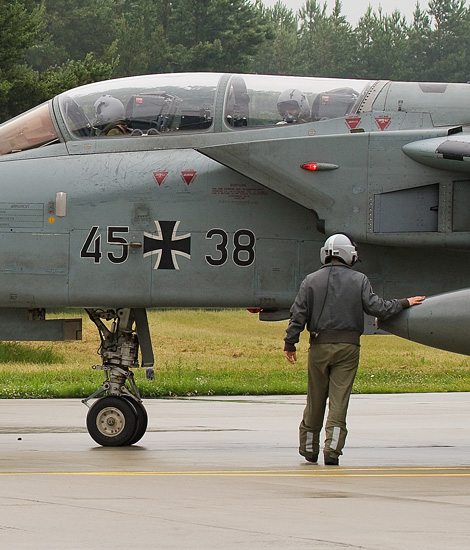
|
Jagdbombergeschwader 32; Lechfeld June 25, 2009
German Electronic Warfare; Text and Photograph's by Alex van Noye
On Thursday, June 25, I was a guest on the airbase of Lechfeld in the south of Germany. Lechfeld
is the home base of Jagdbombergeschwader 32 of the German air force and is equipped with the Tornado
ECR. There are currently about thirty-six Tornado's of this type at Lechfeld.
The Jagdbombergeschwader 32 (JBG32) was established on July 22, 1958 at the German airbase of Lechfeld
and was equipped with the F-84F Thunderstreak. The F-84F made within this unit more than 80,000 flight
hours in 1965 before the F-104G Starfighter was introduced. The last Thunderstreak left the air base on
July 13, 1966. The Starfighter flew in this unit until April 1984 and it made up to 204,986 flight hours
recorded in nineteen years of operational flights. The Panavia Tornado IDS was the successor of the
Starfighter in 1984 and it was used as a conventional fighter-bomber. The development of the Tornado ECR
started from the beginning of 1991. The aircraft would be used in the role of electronic warfare and
reconnaissance within this unit. JBG32 is the only German unit which is equipped with the Tornado ECR and
thus the only unit with this special task within the German Air Force. This version of the Tornado is
specially designed for the destruction of enemy radar installations. The main armament of this Tornado
variant consists of the AGM-88 HARM (High-Speed Anti-Radar Missile) missile. This missile is also like the
aircraft designed for the destruction of enemy radar installations.
The tornado ECR is a variant of the Tornado IDS and is designed for so-called SEAD (Suppression of Enemy
Air Defenses) missions. The first versions of the Tornado ECR were delivered in May 1990. The aircraft was
equipped with ELS (Emitter Locator System), which was designed to detect radar activity. In addition to this
system, the Tornado ECR was equipped with the AGM-88 HARM missile. The HARM missile is designed to destroy
radar installations. The German Air Force ordered thirty-five aircraft of the Tornado ECR variant and bought
sixteen Tornado's IDS form Italy which were converted to Tornado ECR. The German Tornado's were also equipped
with a Honeywell infrared reconnaissance system. It was removed soon because it was impractical to have a
plane which is equipped for reconnaissance and SEAD
|
|
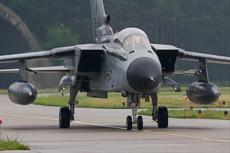
|
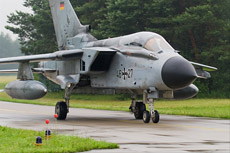
|
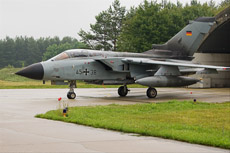
|
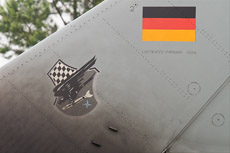
|
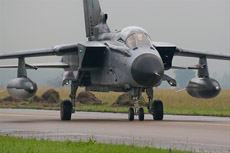
|
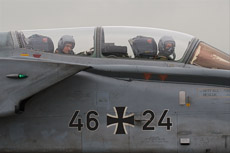
|
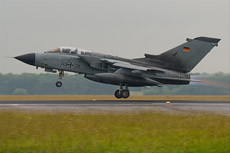
|
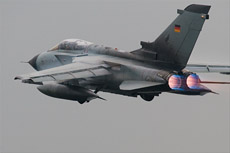
|
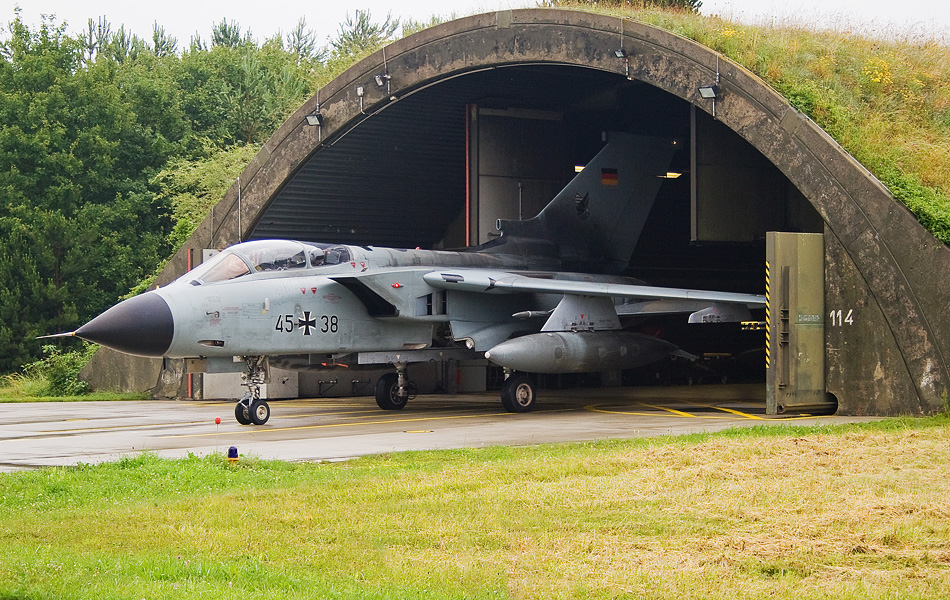
|
missions simultaneously. The big difference between
Italian and German ECR Tornado's is the fact that the Germans can carry a reconnaissance system and the
Italians can not. Also, the German Tornado's have more power in their engines compared with the Italians
because they have more modern engines.
The German Tornado's went to war for the first time in Yugoslavia in July 1995. This was the first time since
the Second World War that German planes were involved in air strikes. The Tornado's of JBG32 were temporarily
based at Piacenza in Italy. From this base they flew their missions to Yugoslavia. The unit flew SEAD missions
and carried out many reconnaissance flights. On March 24, 1999 JBG32 entered war again, this time during the
air strikes on Serbian targets during Operation Allied Force of the NATO partners. During this war the Tornado
ECR was used against radar targets and therefore they used the AGM-88 HARM missile.
When we arrived at Lechfeld in the morning, the weather was gray and dull. Not the best conditions to take
photographs of the light grey camouflaged Tornado's of the German Luftwaffe. After a short introduction by
our guide, we were driven to the shelter camp of JBG32 by bus. After a brief period of silence the Tornado
pilots started the first engines and the warming up of the aircraft could start. The first aircraft rolled
out of its shelter fifteen minutes after the first engine started up. I stood across the taxi track into the
grass which was an ideal position to capture everything which would pass. A total of six Tornado's passed us
and they rolled in the direction of the main runway where they waited in the holding area. We were quickly
driven by bus to the main runway where we were positioned halfway the runway into the grass. Soon, the first
planes took off; it brought me some spectacular take-off shots from this position.
When all these Tornado's were airborne, we would visit a small museum which is located on Lechfeld. Photo
presentations and reports displayed the entire history of Lechfeld in this little museum. In the big hall of
the museum, pilot equipment, aircraft parts, models and squadron badges were displayed and many other things
which had to deal with Lechfeld and the German air force. After we visited the museum, we left to the workshop
where the Tornado's were maintained. Inside this building we found an amount of twelve Tornado's and
technicians were working on the aircraft. The first aircraft would return for landing to Lechfeld one and a
half hour after the last Tornado take-off. We were positioned next to the head of the main runway from where
we could photograph the entire recovery. In the meanwhile the sun appeared from behind the clouds and we had
a nice summer sun over the incoming Tornado's. One by one the Tornado's came in for landing and they were very
easy to capture on photo. A grey sky and a green background in combination with some sunlight made it a great
success.
After our tour in the morning at Lechfeld our visit was over. We went back to the main entrance of this
German base by bus. On our way back to the entrance we passed another maintenance hangar. We asked our guide
if it was possible to see the Tornado's inside this hangar. There were three additional Tornado's inside the
building and we were allowed to take pictures of them. On the platform we also found two Tornado's and the
light conditions were good on these aircraft. The ground crew was busy bringing these aircraft back inside
the building. After a short visit to this platform we continued our way to the entrance of Lechfeld. After
a visit of more than four hours, we continued our journey inbound Zeltweg Austria. It was a very nice visit
to a great base of the German Luftwaffe. Again I was happy with my photographs from today's visit.
|
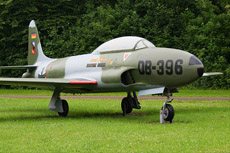
|
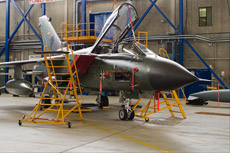
|
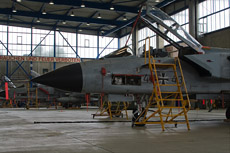
|
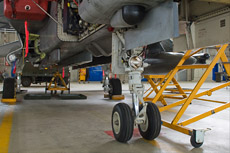
|
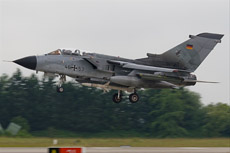
|
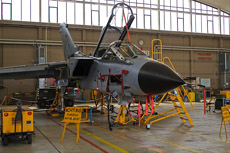
|
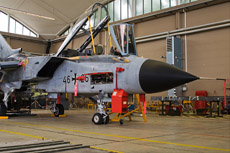
|
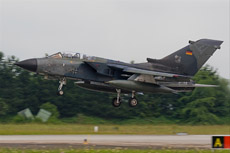
|
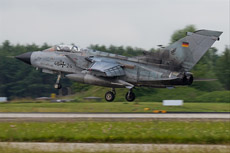
|
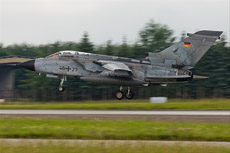
|
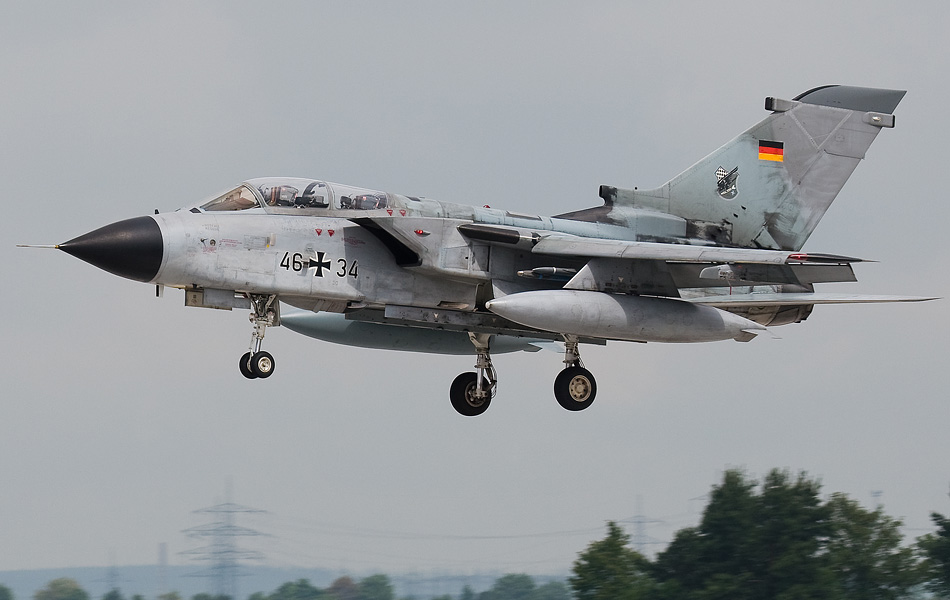
|
|
|

|







